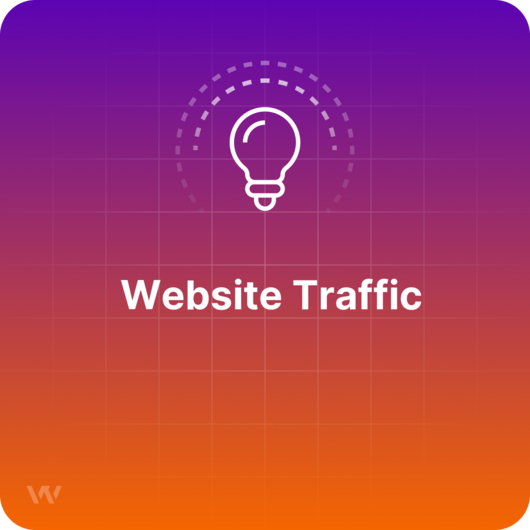Website Traffic

What is website traffic?
Website traffic is measured by viewing the statistics and recorded activity on the server log file or by inserting a few lines of HTML code on the pages of your website- the latter being the most common way of tracking for website analytics services. Traffic represents a cluster of statistics, and it can be strategically monitored by looking at the following metrics:
- Visitors
- Unique Visitors
- Page Visits and Top Visited pages
- Exit pages
- Bounce Rate
- The average number of page views per visitor
- The average time spent on the website
- Conversions
- Live Visitors
- Latest Visitors
- Start Pages
- Visitor Location (you can check Visitors by Country and by City as well)
- Referrers
- Operating systems
- Browsers
- Display Resolutions
- Devices
- Status (is it a new, returning or conversion visitor)
Of course, you can go deeper into all the metrics and check the number of visitors per hour, day or month, or the number of visitors using a specific OS, browser, screen size, and many other specific metrics.
The ranking of a website is influenced by your traffic as a whole and by the website visitors behavior (how relevant is the website content for the visitor, if the visitor is engaged or bounces, and much more info related to the visitors’ activity - both within site and outside of it)
Why is website traffic important?
Understanding analytics helps you increase your website traffic and ranking in search engines!
You can easily understand your customers’ behaviors on the website and create efficient communication strategies based on their engagement. If you know the number of visitors by location, you can launch a promo campaign based on some visitors’ specific holiday, or based on a happening in a specific neighborhood; If you know your web traffic peak hours, you can use the information to find the perfect hour and day to publish a new post on your site.
Besides a visible growth in web traffic, you can also be more specific and limit access to the website for people in certain locations that are not in your target group (e.g., political candidates can block users outside of their voting district during an election campaign).

